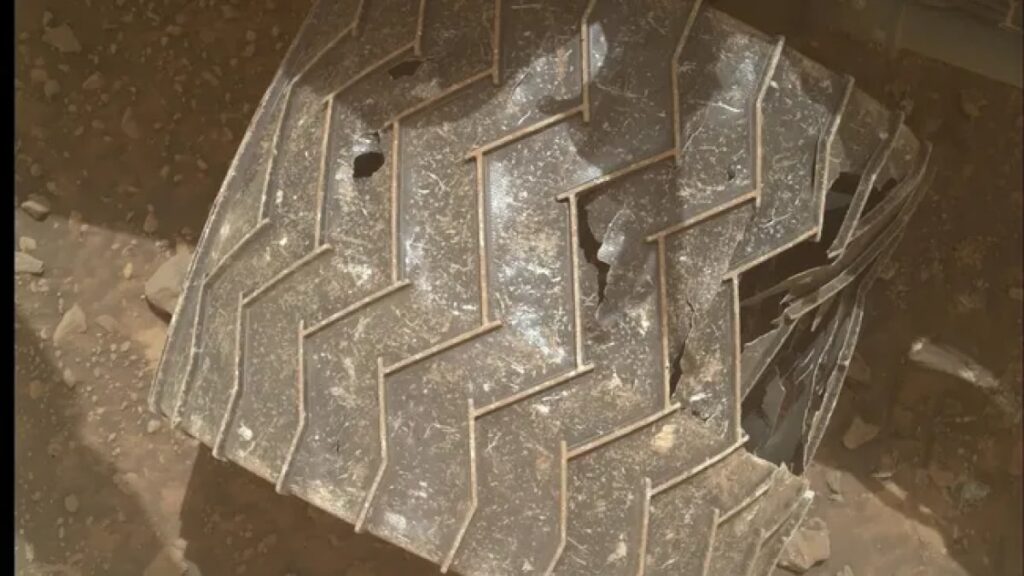After more than a decade of navigating the surface of Mars, NASA’s Curiosity rover is showing signs of wear and tear on its wheels. Since landing in Gale Crater in 2012, the rover has traveled about 20 miles (32 kilometers) over rough terrain, and its six wheels are looking pretty worn. Recent images taken by the rover’s Mars Hand Lens Imager (MAHLI) on September 22, 2024 reveal different types of damage, from minor dents to larger wounds.
Significant damage observed
Ashley Stroupe, a mission operations engineer at NASA’s Jet Propulsion Laboratory (JPL), assured enthusiasts that despite the extensive damage, the wheels remain functional. The rover’s wheels have been showing signs of deterioration for years, and visible wear was first noticed back in 2013. Given that the one-ton rover traverses uneven surfaces filled with jagged rocks, some damage was expected. Accordingly, the Curiosity team initiated regular inspections of the wheels to closely monitor their condition.
Efforts to preserve wheel life
In an effort to preserve the life of the wheels, the team occasionally steered Curiosity away from dangerous terrain. In addition, in 2017, engineers at JPL uploaded new software that allows the rover to adjust the speed of each wheel. This adjustment helps minimize the pressure on the wheels while traversing rocky terrain.
Current mission and future insights
Despite the constant wear and tear seen in the latest images, Curiosity continues its scientific mission to explore Mars and search for signs of ancient microbial life. Insights gained from damage seen on Curiosity’s wheels have already led to improvements in the design of the wheels on the Perseverance rover. With any luck, Curiosity’s wheels will still hold up, allowing the rover to continue exploring the Martian surface.


